Due to the Covid-19 outbreak, we have been receiving a lot of inquiries if our industrial mixers can be used in making hand sanitizers. We took action in answering your queries in this guide.
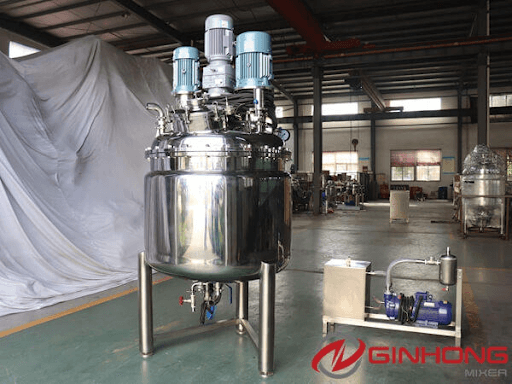
In this article, we’ll teach you everything you need to know on how to manufacture hand sanitizer using our multi-shaft mixers. If it’s your first time to buy a multi-shaft mixer, we’ll also guide you in choosing the best hand sanitizer making machine.
Finding an Industrial Mixer Manufacturer for Hand Sanitizer
Ginhong is one of the best industrial mixer manufacturers in China. We have supported tons of companies worldwide in choosing and buying mixing equipment. One of our greatest advantages is we offer top-quality industrial mixers at reasonable prices.
How to Make Hand Sanitizer in a Factory?
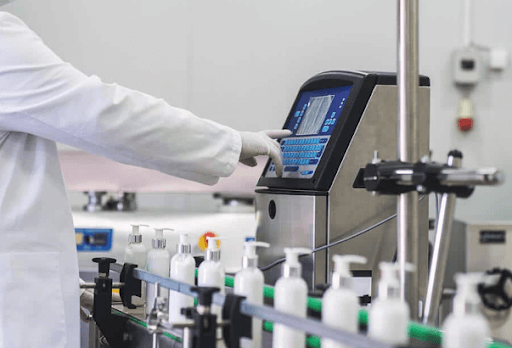
1. What Equipment You Need
If you look at a factory of a hand sanitizer manufacturer, you’d see a complete line of the following equipment:
- Mixing equipment, complete with a homogenizer, disperser, pneumatic lifting component, motors, stainless steel pipes, filters and valves,
- filling and sealing machines, and
- labeling equipment.
The most important equipment is the hand sanitizer mixer. This machine is designed to mix ingredients which should result in consistent batches of gels or liquid hand sanitizer.
2. What Are the Ingredients?
To make an effective hand sanitizer for killing Coronavirus, the CDC, FDA and WHO recommends it to contain 60% or higher alcohol.
Alcohol is the active ingredient of the hand sanitizer. It may be Ethyl or Isopropyl at 60 to 95% concentration.
Other important ingredients may include the following:
- Distilled water – acts as the solvent
- Carbomer – thickening agent that provides gel-like consistency. (in hand foams, these are in low amounts to render a lower viscous product)
- Glycerol
- Hydrogen peroxide
- Denaturants or Bitter-tasting compound
Additional ingredients:
- Fragrance (not included in non-scented hand sanitizers)
- Coloring (not included in clear hand sanitizers)
- Additional antiseptics like chlorhexidine
- Emollients & gelling ingredient
- Additional foaming agents
Why You Need a High Quality Hand Sanitizer Mixer?
There are a lot of health requirements and international standards which should be met to make a marketable and commercially-successful hand sanitizer. Health authorities are very strict with certificates and specifications with the hand sanitizer manufacturing.
To Comply With Health Authority Standards for Faster Export, Import and Distribution
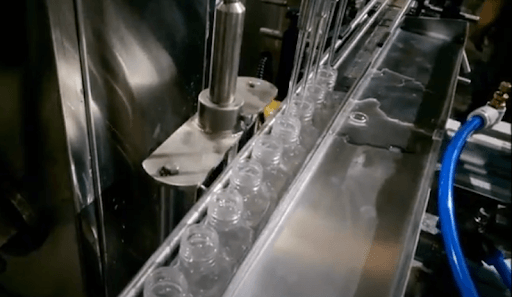
This is amplified by the fact that alcohol-based hand sanitizers are meant to inactivate the Coronavirus, which makes it in high demand right now. That’s why manufacturers and dealers are also going through mileages of paperworks and custom clearance for shipping to importing hand sanitizers.
And that’s also why making top-quality hand sanitizer with a high quality mixer is also vital to shorten the process of manufacturing. This also ensures that your product can immediately get approved with health and safety requirements.
To Make Appealing Commercial Sanitizer Gel with Faster ROI
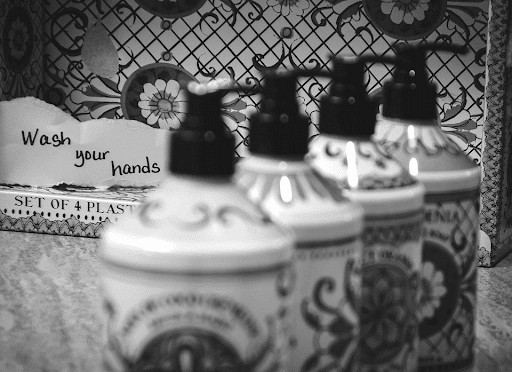
Ginhong manufactures a specialized Gel Multi-shaft Mixer intricately made to make consistent and agglomerate-free batches of hand sanitizer gels. We offer a variety of mixer sizes to fit your ingredient specifications and your budget. You can easily market your products at a higher return and faster ROI.
Our Multi-Shaft machinery is built for making instant hand sanitizers, foaming hand antiseptics and other cosmetic and pharmaceutical creams.
What is a Hand Sanitizer Multi-Shaft Mixer?
One of the things you will find intriguing about Multi-Shaft mixers is its remarkable design – an engineer’s brainchild and a machinist’s delight.
A Multi-Shaft mixer consists of two or three simultaneously driven independent shafts with varying lengths working in tandem. It is different from the regular agitators that only have one anchor stirrer. This type of equipment is highly recommended for reducing processing steps and additional equipment acquisition.
Most of the time, a dual-shaft or triple-shaft is used in disintegrating, homogenizing,dispersing and blending exceedingly difficult and viscous materials such as adhesives and epoxy.
Considerations in Buying Hand Sanitizer Multi-Shaft Mixers
Some of the essential heads-up you need to consider in selecting a multi-agitator for your hand sanitizing product are:
- Can it work at the speed and shear rate the product needs to produce its optimum rheological features?
- Can it effectively carry out low-shear for high viscosity ingredients? Can it blend products at high shear to form grinds?
- What is the rotor size, speed and horsepower needed to reasonably carry out pre-mixing at high-shear rates?
- At what factors is it advisable to switch from single-shaft mixer to multi-shaft mixer for my mixing process?
Is a Multi-Shaft Mixer Right for a Hand Sanitizer Industry?
Multi-shaft mixer combines all the features you need to make a consistent-quality hand sanitizer gel or liquid. It can effectively mix powders, liquids and oils to make a perfect emulsion with better flow, optimum shear and effective heat transfer.
How to Test Your Ingredients?
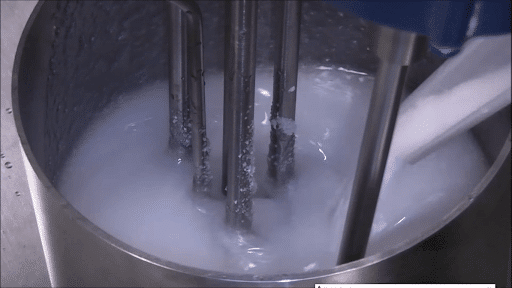
In order to know if you picked the right multi-shaft mixer, one of the following can be done:
- The manufacturer will have to test your material samples at their in-house testing facility.
- You can also go to the manufacturer’s laboratory to verify results.
Typically, the manufacturer will use a prototype or a lab mixer which is a representation of the industrial multi-shaft mixer. Under mixer simulation, you and the manufacturer can be able to investigate if the mixer adapts to your materials’ requirements.
Furthermore, both sides can be able to determine the proper specifications of the mixer; Does it need two or three agitators? Does it need hydraulics? Is vacuum needed?
Knowing its Capabilities
Multi-shaft mixers or multi-agitator mixers have the following capabilities:
- operate two or three different agitators in a variety of configurations,
- an electronic speed drive allows the independent operation of the agitators at varying speeds to mix, emulsify and homogenize the product.
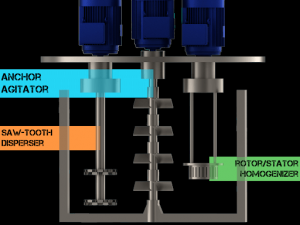
Specifying the Right Multi-Shaft Mixer for Hand Sanitizer
To know which type of multi-shaft mixer is the best for your application, you should be able to answer the following first.
1. Type of Product for Multi-Shaft Mixers
If you are processing high viscosity products with viscosities over 750,000 cps, you need a Multi-Shaft Mixer. It can handle large batches of not only hand sanitizers, but also different materials for the chemical, pharmaceutical, cosmetic, food and beverage industries.
Multi-shaft mixers are typically used for production of:
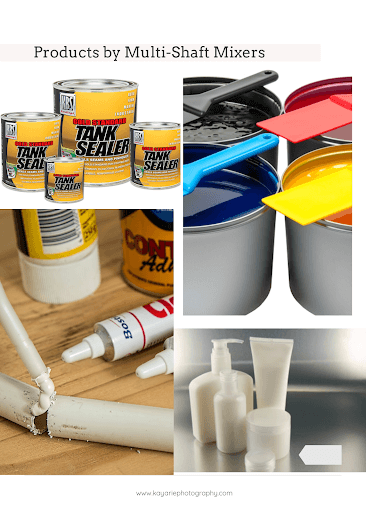
- Adhesives
- Sealants
- Filler compounds
- Coatings
- Silicones
- Dental compounds
- Printing inks
- Caulks
- Hot melt adhesives
- Magnetic media slurry
- Viscous and concentrated creams and lotions
- Toothpaste
- Highly filled formulations such as soy-based adhesives
- Cement pastes
- Urethane sealants
Industries served by Ginhong includes:
- Paint and lacquer industry
- Adhesive and sealant industry
- Building chemicals industry
- Chemical industry
- Pharmaceutical industry
- Food industry
2. What is your throughput per day?
Knowing your desired throughput a day gives you an idea what multi-shaft mixer capacity you should buy and how many equipment you need for your manufacturing plant.
For example, demand calls for 300,000 to 320,000 bottles of 300 mL hand sanitizer per day. Your plant would operate for 16 hours a day (2 shifts, 8 hours per shift).
- Mixing time + residence time for silicone sealant for this scenario is 10 min/batch.
Sizing your mixer capacity:
No. of bottles per hour = 320,000 bottles per hour/16hrs = 20,000 bottles/hr
Volume per hour = 20,000 bottles/hr x 0.3L/bottle = 6,000 L/hr = 100 L/min
Volume per batch = 100 L/min x 10 min/batch = 1,000 L/batch
Choosing a mixer:
- One (1) – 1000 L Dual Shaft Mixer or,
- Two (2) – 500 L Dual Shaft Mixer
There are many factors to weigh-in such as the efficiency of each machine, allowance for downtimes, duration of mixing and material transport and supply.
The example presented above is for you to have a tip on how you can size your machine after weighing all the factors. You may have a meeting with your financial team and engineer on how you can account for other factors.
3. Do you need a custom-made mixer to meet demands?
There are instances that you would need a custom-made hand sanitizer mixer to suit your needs. We have been dealing with multiple customization for customers for a long time.
There are cases that a customer has other plans for the mixer’s control panel components so we did not install one. Other times, customers only want a heating phase tank without the water phase. We also get a lot of requests for size and shape customization.
If you need special considerations for your mixer, we can do this for you.
4. Are you prepared for the upfront investment?
Multi-shaft mixers are anywhere between 3-6 figures internationally speaking. When you deal with a China manufacturer, you can expect a lower upfront investment without sacrificing the quality of the mixer. To give you a tip, this can be anywhere between 3-5 figures.
Multi-Shaft Mixer Selection Guide
Over the years, customers’ demands have taught us how we can innovate our multi-shaft mixers to meet their needs. We have improved our PLC modules, agitator design, pneumatic and hydraulic system and powder and liquid induction system. Ginhong has produced a variety of dual shaft and triple shaft mixers.
Dual-Shaft Mixer
In the past, companies have been using a standard mixer in the initial phase of production, then an end-process of dispersing through a high shear roll mill equipment follows. This means longer processing time and additional cost for a separate equipment.
Ginhong dual shaft mixer performs agitation and homogenization/dispersion in a single mixer. It is used for homogenizing, emulsifying and dispersing ingredients with up to 500,000 cps viscosities. The anchor stirrer slowly rotates in a clockwise rotation while the rotor-stator homogenizer/disperser traverses in a counterclockwise direction. This promotes easier and faster processing time.
Triple Shaft Mixer
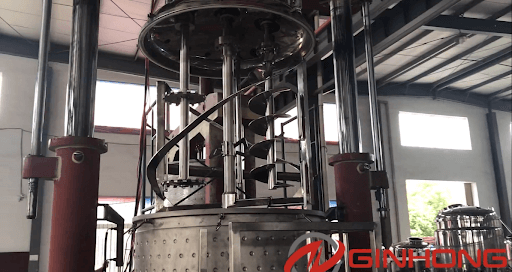
Triple shaft mixers are used for products that reach viscosities of up to 750,000 cps. This can be gums, slurries and adhesives which are very difficult to mix. The vessel is equipped with an auger, disperser and an anchor stirrer.
Materials
The best multi-agitator comes with a stainless steel tank material and all the parts are compliant with cGMP regulations. Stainless steel has a high strength-to-weight ratio that makes it light for its strength capability. It is also notable for being resistive to corrosion so highly acidic ingredients will not affect the properties of the metal.
Stainless steel multi-shaft agitators are recommended for any industry for clean operation. Other material options such as iron simply cannot compete with the overwhelming advantages of stainless steel. For highly abrasive ingredients, Ginhong adds a wear-protective coating on the tank and contact parts to further enhance its resistance.
Options
You can also request the manufacturer to custom-make your mixer according to what your product needs.
- Options for top-entry or bottom-entry mixer configuration.
- Options for vacuum or hydraulic lift system or both.
- Options for height-adjustment or larger vessel designs.
- Options for heating and cooling system.
- Addition of extra load cells.
- Design for a specialized pressure vessel for varying steam pressures.
- Options for explosion proof motors and electrics.
Mixer Vessel
Capacities can be between 300-5000L for Multi-Shaft vessels.
Fluid Viscosity
Fluid viscosity is an important parameter to consider when it comes to selecting the type of mixer. This is because certain types of fluids would perform differently when you mix it. Some fluids would thicken as you mix, while others remain at the same viscosity. You need to determine the behavior of the fluid you will use.
Here are some of the most common kinds of liquids.
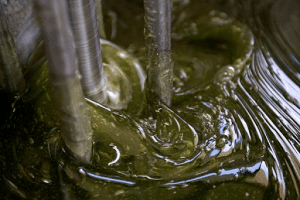
Pseudoplastic Liquids: increase in shear rate, viscosity also increases. Some examples would include latex, paints and gels.
Dilatant Liquids: Increase in shear rate increases viscosity of dilatant liquids. Candies, slurries and clays are examples of dilatant liquids.
Newtonian Liquids: Viscosity of the fluid remains as mixing increases. Water and mineral oils are perfect examples.
Thixotropic Liquids: This type of liquid decreases in viscosity as you agitate it. Some examples include peanut butter and tars.
Speed/RPM
RPM is simply the number of revolutions traverse by the shaft in one minute. The agitator speed (~50 RPM) is relatively low as compared with homogenizer speed (~3000 RPM) and disperser speed (~1400 RPM).
The slow mixing of the anchor agitator facilitates mixing, while the fast action of the saw-tooth disperser accomplishes emulsification through centrifugal force.
Torque
This is the force needed to drive the ingredients through the rotation of the shaft of the motor. The torque depends on the viscosity of the material and its behavior so you need to determine them first.
Horsepower
This is the actual power rating of the motor in which the multi-shaft mixer needs and is determined by the Torque (N-m) capacity and Speed (RPM) of the shaft.
HP = 4.687TN/60
Motor
It is common that agitator motors are electric motors but some use hydraulic motors for small batch capacity applications.
To solve overhung loads and stresses that may break off the shaft, heavy-duty bearings can be used.
Mixer Mount
You can choose a mount type depending on the space of your plant for the mixing section. Other factors include the capacity of the tank and whether or not it has hydraulic lift system and other components.
Workheads
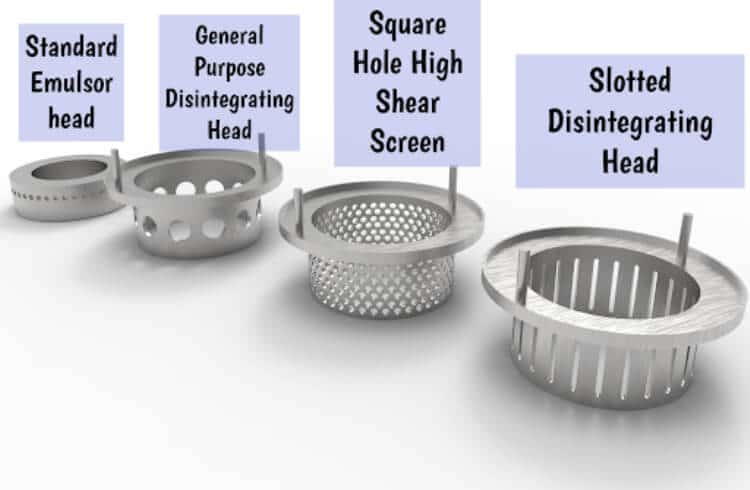
Ginhong manufactures a complete range of workheads for multi-shaft mixers. Choosing which type of workhead performs best with your product can do better with the mixing, dissolving, dispersing and particle size reduction.
Anchor Impeller
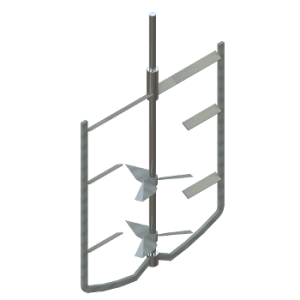
An impeller is a crucial part of mixer optimization. Since it is the component that does the actual mixing and produces the desired result, it must be designed and sized to maximize efficiency.
LZ Open Dual Shaft Mixer (Without Hydraulics) Machine
Simplest and most cost-effective non-vacuum Hand Sanitizer mixer with low air gap
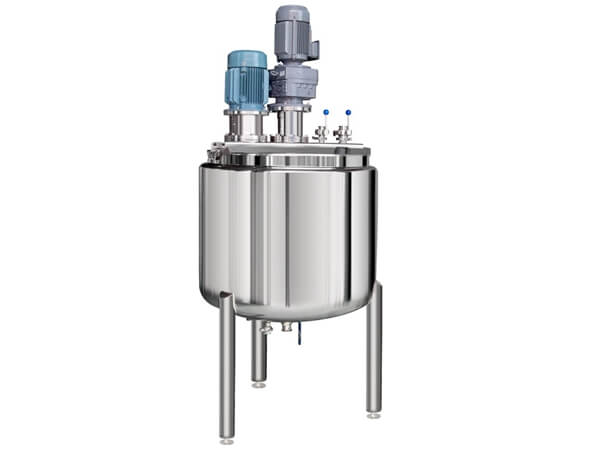
The LZ Open Dual Shaft Mixer without hydraulics lifting system is a mixer that does not have a special top sealing feature for applications that does not need vacuum. The machine combines a low speed anchor agitator and one high speed disperser or top entry batch homogenizer in one vessel.
Key Features
- Combination of a slow stirrer Anchor Agitator with Teflon sweeper and a high shear disperser.
- Complete process of mixing, dissolving, dispersing, emulsifying, homogenizing, in one unit.
- No lifting system to reduce cost and space.
- No vacuum pump
- All contact parts are made of SS304/316L and mirror polished;
- Comply with cGMP regulations;
- Delta, Schneider or Siemens PLC for automation
- Power supply of 380V, 50Hz, 3 Phase;
- Double jackets for heating and cooling;
- Different jacket designs available for steam and electric heating.
Process
- During mixing, the agitator slowly rotates clockwise. The Teflon scraper built in the agitator sides removes suspended materials from the vessel wall.
- An ABB or Siemens motor drives the saw-tooth disperser at 1400 RPM, enough to produce shearing effect to breakdown and emulsify ingredients. This facilitates rapid dispersion at a short period of time. A homogenizer can replace the disperser for dissolving and homogenizing the products.
- Due to the opposite action of the agitator and disperser, the product goes in a turbulent action from the top to the bottom of the vessel.
- A heating jacket distributes the heat all over the inside wall of the vessel.
Other Applications
- Beverages such as wine, coke, etc.
LZ Vacuum Dual Shaft Mixer (Without Hydraulics) Machine
Your simple and cost-effective hand sanitizer mixer for better dispersion and for making bubble-free pastes, ointments, paints and inks
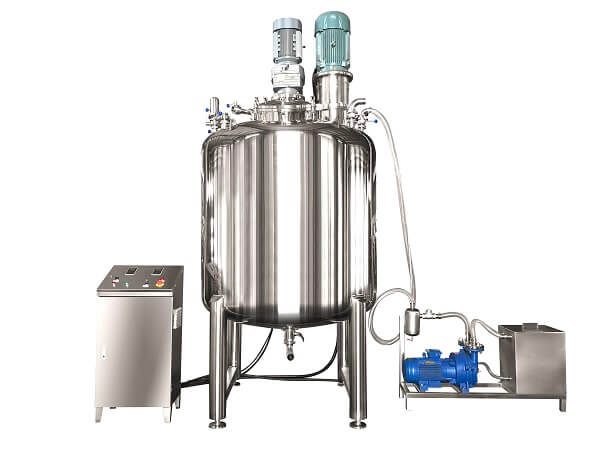
The LZ Vacuum Dual Shaft Mixer without hydraulics lifting system combines a low speed anchor agitator and one high speed disperser or top entry batch homogenizer in one vessel. The stirrer Anchor Agitator with Teflon sweeper scrapes materials from the inner mixer walls that enhances the heat transfer in the mixer. The agitators works in tandem with two variable speed motors.
The mixing takes place in a vacuum-filled system to help pull out the bubbles and eliminate additional equipment such as a deaeration unit. In beverages and alcohols, mixing in vacuum also minimizes oxygen content that enhances the shelf life of the product.
Key Features
- Combination of a slow stirrer Anchor Agitator with Teflon sweeper and a high shear disperser.
- Complete process of mixing, dissolving, dispersing, emulsifying, homogenizing, in one unit.
- No lifting system to reduce cost and space.
- All contact parts are made of SS304/316L and mirror polished;
- Comply with cGMP regulations;
- Delta, Schneider or Siemens PLC for automation
- Power supply of 380V, 50Hz, 3 Phase;
- Double jackets for heating and cooling;
- Different jacket designs available for steam and electric heating;
Process
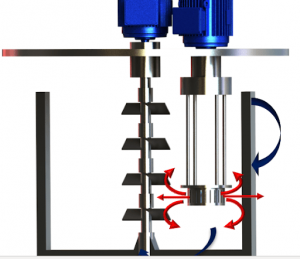
- During mixing, the agitator slowly rotates clockwise. The Teflon scraper built in the agitator sides removes suspended materials from the vessel wall.
- An ABB or Siemens motor drives the saw-tooth disperser at 1400 RPM, enough to produce shearing effect to breakdown and emulsify ingredients. This facilitates rapid dispersion at a short period of time. A homogenizer can replace the disperser for dissolving and homogenizing the products.
- Due to the opposite action of the agitator and disperser, the product goes in a turbulent action from the top to the bottom of the vessel.
- A heating jacket distributes the heat all over the inside wall of the vessel.
- A water ring type vacuum pump (–0.09Mpa) pulls out the bubbles during the operation to enhance product quality and deaerate it. It also functions to remove dust.
Other Applications
The LZ Vacuum Dual Shaft Mixer without a hydraulics lifting system is used for the production of viscous paste and emulsions. It’s especially suitable to make:
- Battery slurry
- Adhesives
- Sealants
- Paint, coatings and inks.
SZ Vacuum Triple Shaft Mixer without Hydraulics
The SZ Vacuum Triple Shaft Mixer without hydraulics lifting system combines a low speed anchor agitator, one high speed saw-tooth disperser and a top entry batch homogenizer in one vessel. The stirrer Anchor Agitator with Teflon sweeper scrapes materials from the inner mixer walls that enhances the heat transfer in the mixer. The agitators works in tandem with three variable speed motors.
The vacuum-filled mixer enhances the mixing process by eliminating air entrainment. Vacuum-filled triple shaft mixers also prevent microbial activity, minimize oxygen content and prevents powders to easily float at the surface.
Thus, homogenizing, emulsifying and dispersion are all effectively performed in a shorter cycle duration.
Key Features
- Has an anchor stirrer with Teflon wipers, a high speed disperser and a high shear homogenizer.
- The vessel is double jacketed for steam heating.
- Complete process of mixing, dissolving, dispersing, emulsifying in one unit.
- No lifting system to reduce cost and space.
- All contact parts are made of SS304/316L and mirror polished;
- Comply with cGMP regulations;
- Delta, Schneider or Siemens PLC for automation
- Power supply of 380V, 50Hz, 3 Phase;
Process
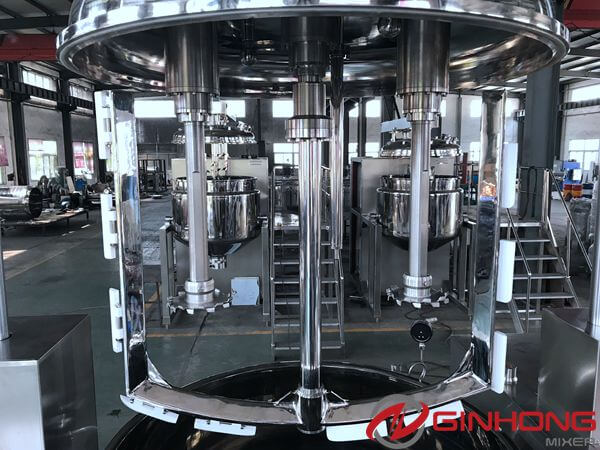
- In the mixing vessel, the agitator rotates slowly in a clockwise direction. The scraper attached to the agitator removes suspended materials from the vessel wall.
- A separate motor drives the saw-tooth disperser shear and break down ingredients. This facilitates rapid dispersion at a short period of time.
- Another separate motor drives a homogenizer that facilitates top to bottom mixing of the ingredients that quickly homogenize products.
- Due to the opposite action of the agitator, disperser and homogenizer the product goes in a turbulent action completely solubilizing, emulsifying and blending ingredients.
- A water ring type vacuum pump (–0.09Mpa) pulls out the bubbles during the operation to enhance product quality and deaerate it. It also functions to remove dust.
Typical Application
Production of very difficult and viscous paste and emulsions. It’s especially suitable to make:
- Battery slurry
- Adhesives
- Sealants
- paint, coatings and inks.
LZ Vacuum Dual Shaft Mixer (with hydraulic lift system)
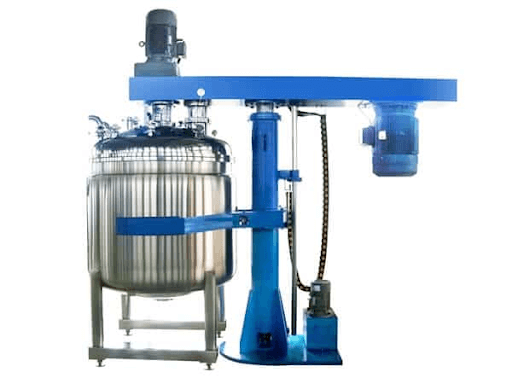
When a hydraulic lift system is installed, the mixer can be opened, closed and tipped in automatically with a push of a button. This facilitates easy cleaning, maintenance and mixer upkeep.
Process
- During mixing, the agitator slowly rotates clockwise. The Teflon scraper built in the agitator sides removes suspended materials from the vessel wall.
- An ABB or Siemens motor drives the saw-tooth disperser at 1400 RPM, enough to produce shearing effect to breakdown and emulsify ingredients. This facilitates rapid dispersion at a short period of time. A homogenizer can replace the disperser for dissolving, disintegrating and homogenizing the products.
- Due to the opposite action of the agitator and disperser, the product goes in a turbulent action from the top to the bottom of the vessel.
- A heating jacket distributes the heat all over the inside wall of the vessel.
- A water ring type vacuum pump (–0.09Mpa) pulls out the bubbles during the operation to enhance product quality and deaerate it. It also functions to remove dust.
SZ Vacuum Triple Shaft Mixer (with Hydraulic Lift System)
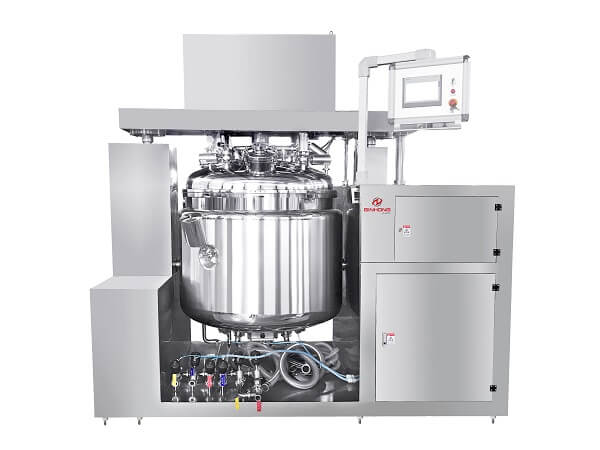
The specifications are the same with the SZ Vacuum Triple Shaft Mixer, but it has a lift system operated by a hydraulic servomotor. When this is installed, the mixer can be opened, closed and tipped in automatically with a push of a button. This facilitates easy cleaning, maintenance and mixer upkeep.
Process
- In the mixing vessel, the agitator rotates slowly in a clockwise direction. The scraper attached to the agitator removes suspended materials from the vessel wall.
- A separate motor drives the saw-tooth disperser shear and break down ingredients. This facilitates rapid dispersion at a short period of time.
- Another separate motor drives a homogenizer that facilitates top to bottom mixing of the ingredients that quickly homogenize products.
- Due to the opposite action of the agitator, disperser and homogenizer the product goes in a turbulent action completely solubilizing, emulsifying and blending ingredients.
- A water ring type vacuum pump (–0.09Mpa) pulls out the bubbles during the operation to enhance product quality and deaerate it. It also functions to remove dust.
Understanding the Difference Between Hand Sanitizer Mixer Manufacturers
Asking for a quotation for your Hand Sanitizer Multi-shaft mixer is not simple and quick. Simply picking a mixer model in a catalogue is not a good way to purchase a mixer immediately. It is better to have a conversation with your Multi-Shaft Manufacturer to tailor the unique specifications that you need for your mixing process.
Therefore, you may expect the following questions from your multi-shaft manufacturer before they hand you a proposal and suggestions.
GENERAL INFORMATION
1. When do you need to be up and running with new mixer?
2. Do you have an existing mixing equipment in your plant now?
3. Do you have a budget in mind?
4. Is your project approved and funded?
PRODUCT INFORMATION
5. What is your product?
6. POWDER PRODUCTS: What is the bulk density? LIQUID PRODUCTS: What is the fill temp and viscosity?
7. Is your product dusty?
8. Does your product needs to be cooled or heated?
FACILITY INFORMATION
9. How many shifts are in production at your facility?
10. What is the electrical availability in your plant?
11. What is your plant ceiling height?
EQUIPMENT INFORMATION
12. How do you wash down your equipment?
13. Do you need equipment to feed and/or dose your product into the main mixing vessel?
Calculating ROI on CapEx– How long will it take for your investment to pay for itself?
Calculating the Return on Investment from capital expenditure lets you forecast how long it’s going to take for your investment to pay off. Here are five steps to calculate your ROI.
1. Ask the manufacturer for a quotation and add up equipment acquisition costs. Your list may include:
- Mixer price
- Freight costs
- Commissioning and installation costs
- Training costs
- Cost of financing
- Annual maintenance and parts expenses
2. Think carefully and add miscellaneous fees and additional costs that you think would need to be regarded. You may involve your financial advisor in the matter. The cost may include tax incentives when you purchase your mixing equipment, etc.
3. Include rental program fees if applicable when you rent the equipment for a month or two.
4. Calculate ROI.
Calculate the Payback Period (PBB) Formula
This determines how much time it will take to recoup the initial investment.
Payback period= Total new equipment cost/total periodic benefit realized from new equiipment
For example, a 2.2 Kw batch high-shear mixer (50L) costs $3,000 and a cosmetic company has a net annual benefit of $2,500
Payback period=$3000/$2500 = 0.5 years or half a year
Calculate the Simple ROI
ROI is the ratio of a benefit or loss made in a fiscal year expressed in terms of an investment and shown as a percentage.
Return of Investment (ROI)=Net benefit or loss generated by new equipment/total new equipment cost
Using the same example as above, if you are purchasing a mixing unit for $3,000 and forecast a net annual benefit of $2,500 (reduced energy consumption, eliminating additional deaeration units, shorter mixing cycle, heating time, or discharge time, smaller footprint, etc), your return on investment will be:
Return of Investment (ROI)=($2,500/$3000)x 100 = 83.33%
Thorough understanding of all the financial and technical information to see your potential return on investment in a new industrial mixer will muster enough confidence in you to decide and take a course of action.
You can partner with Ginhong, and together, we can discuss and plan out the optimum hand sanitizer mixer specifications and features you need that would bring your company success in your hand sanitizer manufacturing production.
Final Words
Ginhong manufactures innovative and well-engineered manufacturing mixers for Hand Sanitizer Gel, Liquid. If you want to partner with us, simply contact us on our website. We will guide you in every step of the way.
